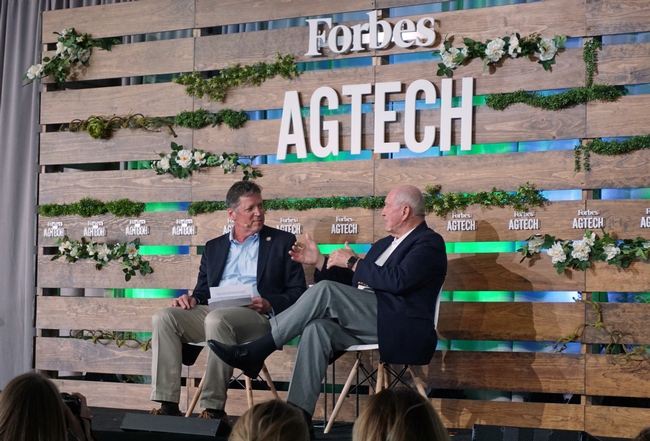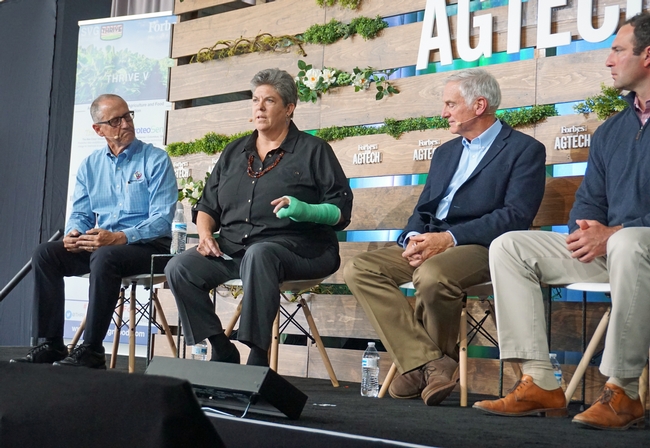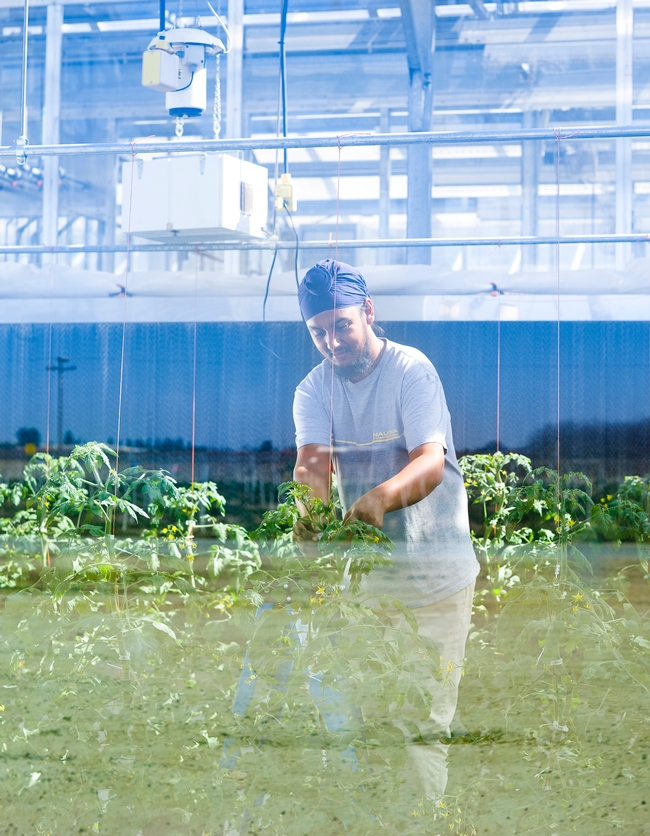Rural connectivity needed to make the best use of technology in agriculture
The Forbes AgTech Summit in Salinas in June on “The Future of Food” showcased technology, innovation and ideas that will make agriculture more efficient, productive, profitable and safe. To make these advancements accessible to all Americans, broadband connectivity must reach currently unserved rural areas, speakers said.
“We've got gee-whiz technology that is dependent on broadband,” said U.S. Secretary of Agriculture Sonny Perdue, the event's keynote speaker. “Rural broadband is a huge issue with transformational capacity to bridge the rural-urban divide.”
A former farmer and governor of Georgia, Perdue said many people who now live in urban areas would welcome the opportunity to populate locations with a slower pace and lower cost of living.
“If they could work from home, if they had connectivity to do their jobs there, many people would choose to live in rural areas,” he said.
Beth Ford, president and CEO of Land O'Lakes, Inc., a $15 billion company headquartered in Minnesota, said about 30 percent of farmers across the country have no access to broadband.
“We have a shared future. Rural communities need to be vibrant,” Ford said. “That starts with broadband.”
The effort to extend broadband access to rural communities in California is a priority for UC Agriculture and Natural Resources vice president Glenda Humiston. While it is potentially expensive to bring internet connectivity to every resident of the state – from the far reaches of Modoc County in the north to remote desert communities near the Mexican border in the south – those communities' lack of high-speed internet is exacting a high economic, medical, social and educational cost.
Humiston was part of a Summit panel that discussed how to cultivate the next generation of leadership in farming. The panelists said future ag industry leaders will need traditional leadership skills – communicating and listening well – but with the growth of agricultural technology, digital literacy is imperative. Using these new high-technology tools will also require broadband coverage, Humiston said.
“Technologies that use artificial intelligence are increasingly dependent on high-speed internet connectivity for real-time data uploads and processing in the cloud,” she noted. “If farms cannot get affordable broadband coverage, or if bandwidth is limited, this will greatly hinder their ability to adopt new technologies.”
Event highlights
On the first day of the summit, nine companies competed for a $200,000 investment from SVG Ventures-THRIVE. The startup companies' ideas exemplified the emerging technologies that are being developed to advance the future of food and agriculture. The winner was Livestock Water Recycling, a Canadian startup that has developed a way to treat large quantities of manure from dairies, hog farms, beef feeding facilities and anaerobic digesters. The system separates the liquid from the barn into solids, nutrients for precise fertilization, and potable water.
“Creating clean water from manure is exciting,” said CEO Karen Schuett in her presentation.
ProteoSense won the Food Safety Award and The Bee Corp took home the Sustainability Award. ProteoSense is a biotechnology company in Columbus, Ohio, which developed a tool for quick, onsite food safety testing. The Bee Corp offers thermal imaging with proprietary algorithms for accurate monitoring of bee hive health without disrupting the insects by opening the hive.
Two competitors partnered with UC to develop their innovations. Tensorfield Agriculture used technology tested at UC Davis in its weeding robot. The robot applies heated canola oil to weeds, killing weeds within an hour without herbicides and without disturbing the soil. FarmX combines software and sensors to measures soil, plant and environmental variables and accurately measure water stress. The company counts UC Cooperative Extension emeritus advisor Blake Sanden on its team.
The key role of land grant universities like the University of California in developing, testing and implementing agricultural technologies was noted frequently during the Forbes AgTech Summit.
“The advantage of basic and applied ag research, and delivery by the extension service is what's made the U.S. a superpower of food in the world,” said secretary Purdue. “We're on the cusp of regeneration of agriculture and digitization of agriculture. We have the ability, with land grant universities and extension service, to get on the ground floor of understanding new technology.”
Tara Vander Dussen, environmental scientist and farmer at the 6,000-cow New Mexico Milkmaid dairy, also advised, “If you need sustainability advice for your dairy, go to your land grant university.”
UC ANR was a sponsor at the partner level of the Forbes AgTech Summit, which brings together bright minds and innovative institutions from two key parts of California's economic engine — agriculture and technology.



